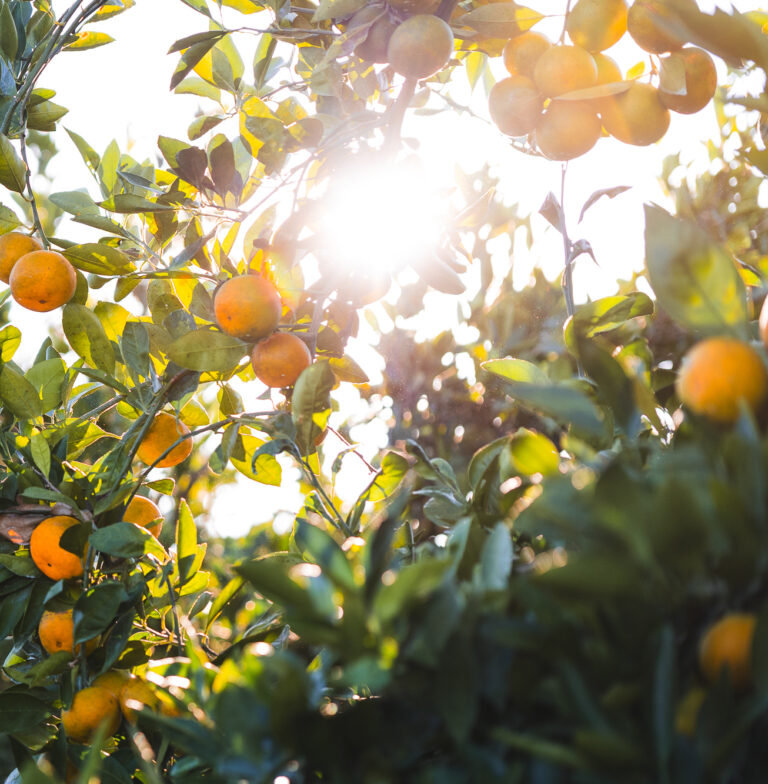
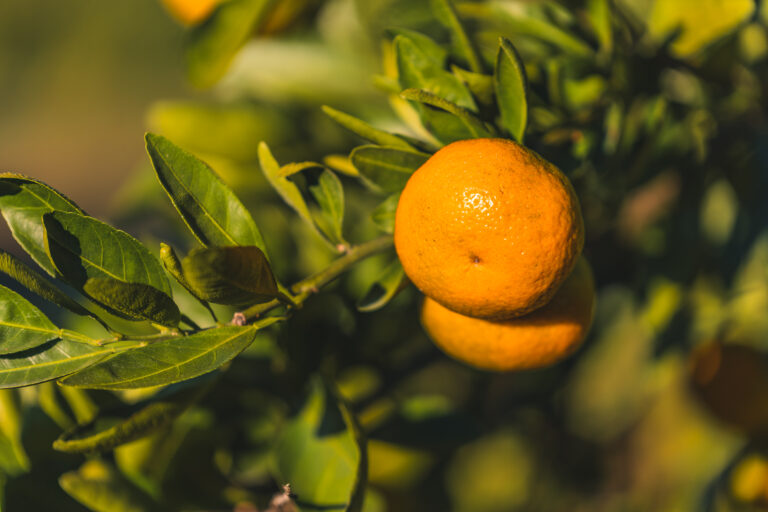
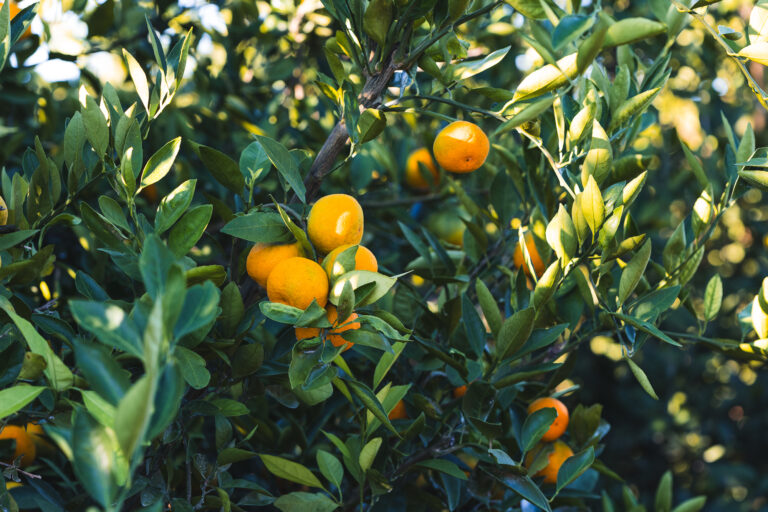

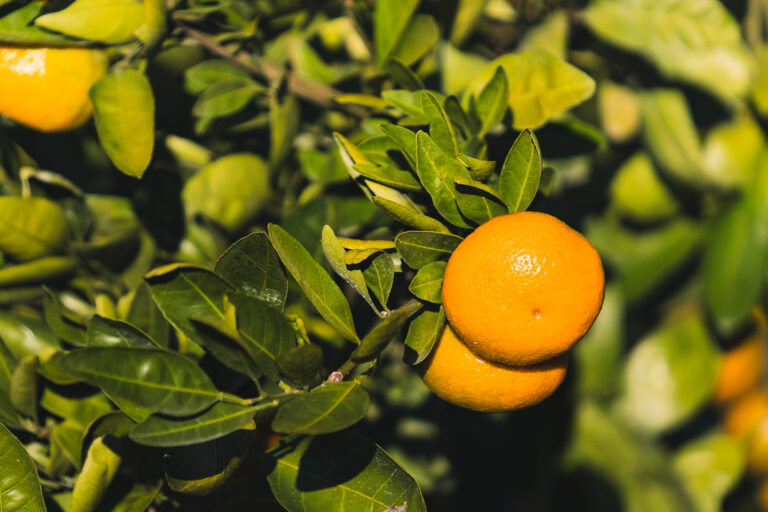
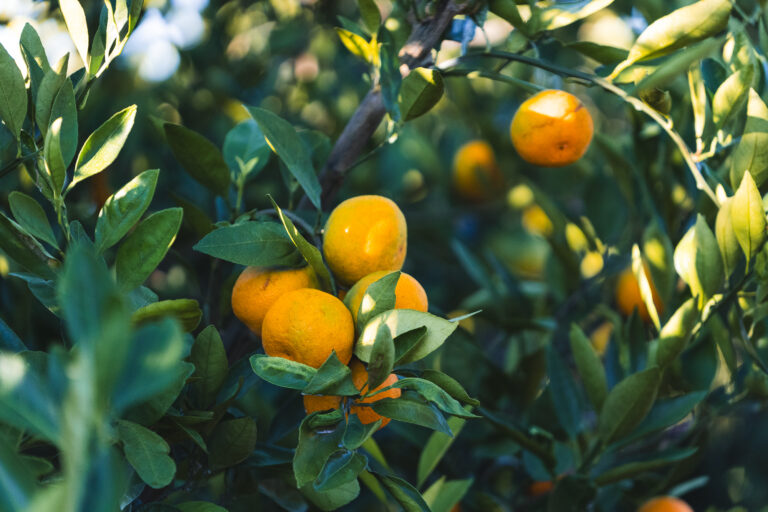
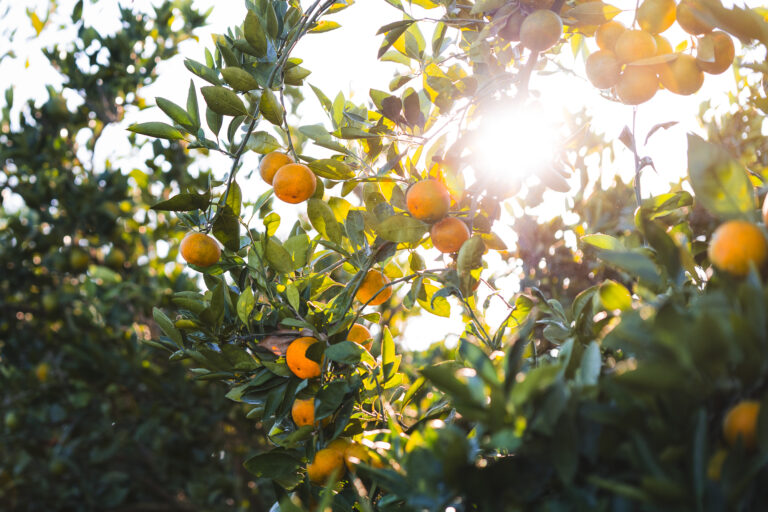

Citrus unshiu Marcovitch
Rutaceae
China and Japan
In most citrus producing areas, satsuma mandarin is the preferred name, but satsuma tangerine is also used.
Grown in cool subtropical regions of Japan, Spain, central China, Korea, Turkey, along the Black Sea in Russia, southern South Africa, South America, and on a small scale in central California and northern Florida. The world’s largest satsuma industry is located in southern Japan where climatic conditions are favorable for the production of early ripening satsuma tangerines of high quality.
Selection of slight mutations and seedlings from controlled pollinations over many years has resulted in a collection of over 100 cultivars that differ in date of maturity, fruit shape, color, and quality. ‘Owari’ is the primary satsuma cultivar commercially grown in Florida, but ‘Brown Select’, ‘Early St. Ann’, ‘Silverhill’, and ‘Kimbrough’ are also available.
Satsuma mandarin may have originated in China, but it was first reported in Japan more than 700 years ago, where it is now the major cultivar grown. The first recorded introduction into the United States was in Florida by George R. Hall in 1876. The name “satsuma” is credited to the wife of a United States minister to Japan, General Van Valkenberg, who sent trees home in 1878 from Satsuma, the name of a former province, now Kagoshima Prefecture, on the southern tip of Kyushu Island, where it is believed to have originated.
During the period 1908-1911, approximately a million ‘Owari’ satsuma trees were imported from Japan and planted throughout the lower Gulf Coast states from the northern Florida Gulf coast to Texas, where an extensive tangerine industry developed. However, occasional severe freezes have reduced satsuma acreage. It is likely the only citrus type to be grown in the southern parts of the states bordering the Gulf of Mexico.
While this fruit is grown primarily for fresh consumption, a portion of the crop is canned as fruit segments or juice in Japan, China, and Spain. In these countries deeply colored juice is blended with orange juice to improve color or sold as single strength tangerine juice. Fresh fruit is also imported into Canada and noncitrus producing areas of the U.S., where it is the earliest seasonal citrus crop to reach the market.
During the 1995-96 season, all tangerines and tangerine hybrids were grown on only about 6% of the total citrus acreage in Florida, with satsuma tangerines occupying only a small part of that acreage.
Although authorities differ as to the number of species and appropriate classification and grouping, mandarins have been divided into four groups: 1) satsuma group ( Citrus unshiu ) 2) the King group ( C. nobilis ), 3) the Mediterranean group ( C. deliciosa) , and 4) the common group ( C. reticulata ). This publication focuses on the satsuma group. See Fact Sheet FC33A, “Tangerines and Tangerine Hybrids,” for more information on these other groups.
Budded trees are small to medium-small, low-growing, usually spreading and drooping, nearly thornless, with less foliage and a more open growth habit than other commercial citrus cultivars. Trees are very hardy to cold and resistant to unfavorable conditions but susceptible to sour orange scab ( Elsinoe fawcetti ), a fungal disease that causes scabby, wart-like lesions on leaves, twigs and fruit without usually affecting internal fruit quality.
Leaves are dark green, large, lanceolate, tapering at the base and apex, and are typically broader than other tangerines. Both main and primary lateral veins are prominent above as well as below. The petiole is slender, very long, and has narrow wings.
Petals of the flower are white and the flowers are “perfect,” containing both male and female flower parts. Satsuma tangerine flowers produce little viable pollen and have few viable ovules. However, the satsuma is highly parthenocarpic (develops fruits without fertilization, resulting in the production of seedless fruit) and does not require pollination by other citrus cultivars.
Botanically, the fruit of tangerines and of all citrus species, is a special berry known as an hesperidium. Fruit is medium to small and shaped like a flattened sphere; sometimes slightly necked; seedless (0 to 6 seeds); has 10 to 12 segments that are loosely separable; tough carpellary membranes and a hollow axis. In areas with cool night temperatures, the flesh is a brilliant reddish orange, tender and melting, with a rich, subacid flavor. Pulp-vesicles are short and broad. Seeds, when present, have light green cotyledons.
Satsumas have consistently high quality only in regions with cool winters and hot summers. Fruit grown in humid subtropical areas commonly matures internally and has good eating quality before good peel color develops. Such internally mature but externally green fruit is sometimes marketed as Emerald Green satsuma tangerines .
Looseness of the rind requires that fruit be clipped at harvest to avoid plugging or tearing, leading to subsequent postharvest decay. Fruit will not tolerate careless handling, does not respond well to degreening and in general, does not ship well. Fruit size is also an important quality factor.
The rind is thin and somewhat leathery; moderately smooth with large and prominent oil glands. As fruit matures, the rind surface becomes increasingly bumpy and the rind separates from the flesh somewhat.
Season of maturity: October – December. Fruit hold poorly on the tree after maturity and must be picked promptly, but store well.
More information about satsumas can be found at the following links:
Website Design, Hosting, and Maintenance by WPTallahassee.